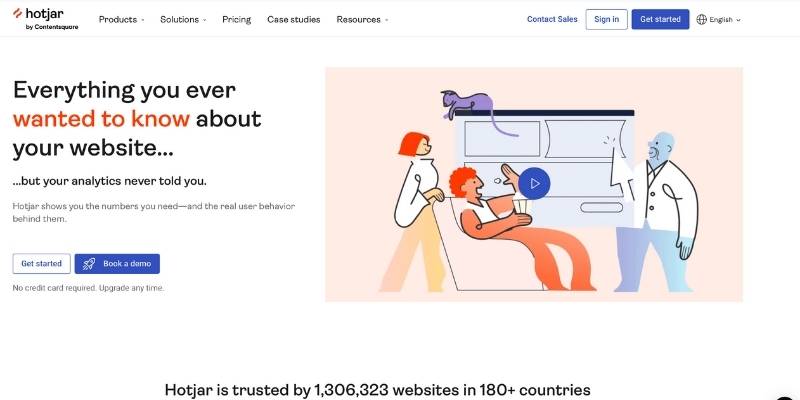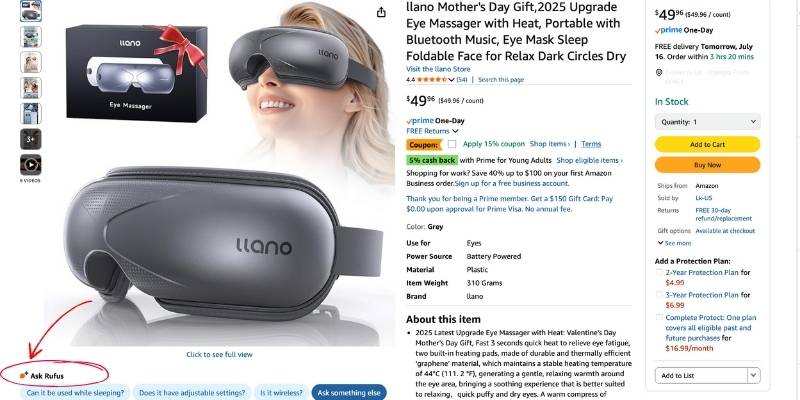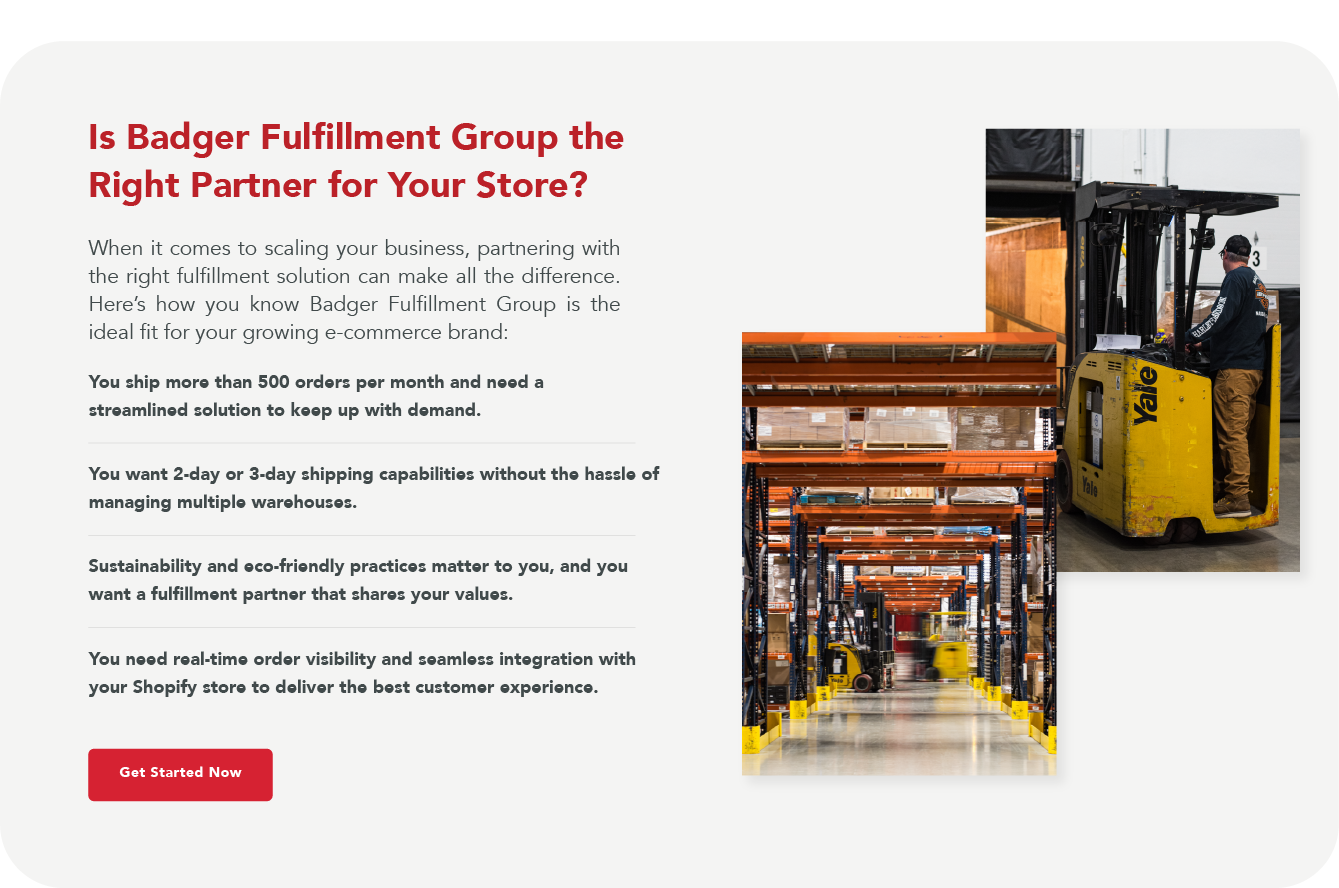When you’re running an online store, traffic is only half the battle. It’s what happens after shoppers land on your site that determines whether your business grows or stalls. A strong e-commerce conversion strategy turns interest into action. It helps you turn browsers into buyers and first-time buyers into loyal customers.
At Badger Fulfillment Group, we know great fulfillment supports strong conversion rates. But fulfillment is just one part of the equation. For your strategy to be effective, your storefront, checkout experience, and post-purchase support all need to work together. A conversion strategy that performs well is built on smart planning, clear insights, and thoughtful execution across every customer touchpoint.
Understanding Ecommerce Conversions
Before you change your site design or update your product pages, step back and look at the full picture. Understanding how your customers move from discovery to purchase will give you clarity on what really needs to be improved.
Ask yourself:
• What channels are bringing in your traffic
• Where are visitors exiting your site
• What factors are influencing their decision to buy or not buy
• How does your post-purchase experience make them feel
Once you have answers to these questions, dig deeper into your analytics and feedback tools. Use heatmaps to see how users navigate your site. Look at drop-off rates in your checkout flow. Pay attention to customer reviews, return requests, and support tickets to spot common themes. When you understand both the emotional and logistical steps your customers take, you can make smarter decisions about where to streamline, where to personalize, and where to follow up.
Types of Conversions
Every action a customer takes on your site matters, but not all conversions carry the same weight. Some actions lead directly to revenue, while others are important steps along the way. Understanding both types helps you fine-tune your strategy and improve the entire customer journey.
Macro Conversions
Macro conversions are your primary goals, the actions that directly impact your bottom line. These include completed purchases, lead form submissions, and subscription sign-ups. When a customer takes one of these steps, it means your site, messaging, and offer all aligned in the right way.
These high-value actions are what most businesses track first, and for good reason. They’re the clearest indicators of performance. But getting there requires more than just a great product. You need to understand what motivates your customers and remove as much friction as possible at every stage.
By focusing on macro conversions, you’re putting your energy where it counts most. These actions drive revenue, fuel growth, and show you what’s working.
Micro Conversions
Micro conversions may seem small, but they’re packed with insight. These are the smaller actions customers take on the path to a purchase, viewing a product page, adding an item to the cart, clicking a social share button, or signing up for a newsletter.
Think of them as signals. They show interest, intent, and engagement. And they often reveal where customers are getting stuck or losing interest. Tracking micro conversions can help you refine your user experience, improve messaging, and personalize outreach.
These touchpoints matter. They build momentum, build trust, and often determine whether a shopper completes a macro conversion later. Businesses that pay attention to micro conversions can spot opportunities to improve the customer journey and turn more visitors into buyers over time.
How Macro and Micro Conversions Work Together
The most successful e-commerce strategies connect the dots between small actions and big results. That’s where understanding how macro and micro conversions work together becomes essential.
Picture your conversion funnel as a series of steppingstones. Micro conversions happen at the top and middle of the funnel. These include things like browsing product pages, clicking into size guides, adding items to a wish list, or signing up for email updates. They’re signs that someone is paying attention and moving closer to making a purchase.
Macro conversions happen at the bottom of that same funnel. They’re the finish line, completing a transaction, subscribing to a service, or filling out a lead form. But without those earlier steps, that finish line gets harder to reach.
When you track and optimize both types of conversions together, you can spot where customers lose interest, build in helpful nudges, and strengthen trust at each touchpoint. For example, if people are adding items to their cart but not checking out, that’s a signal to examine your shipping options, return policy, or checkout flow. If they’re viewing products but not taking the next step, it might be time to simplify your product pages or improve mobile performance.
Micro conversions give you the roadmap. Macro conversions show you the destination. Building a strategy that supports both ensures your site is doing more than just getting visits, it’s helping visitors become long-term customers.
Tracking Conversions Effectively
If you want to improve your conversions, you need to start by measuring them the right way. Tracking is your compass. It tells you what’s working, what’s not, and where to focus your efforts next.
Today’s e-commerce businesses have access to powerful tools that make it easier than ever to monitor customer behavior and understand how people move through your site.
Google Analytics is one of the most valuable tools in your toolkit. Its enhanced e-commerce tracking features let you see where customers enter, how long they stay, which products they view, and what actions lead to conversions. You can break down this data by device, traffic source, and location, giving you a clear picture of what’s driving revenue.
Beyond that, specialized conversion tracking tools can take things a step further. Platforms like Hotjar, Crazy Egg, or Mixpanel offer visual heatmaps, funnel reports, and behavior analytics that help pinpoint friction points on product pages or in the checkout process. These tools are especially useful for identifying where users get stuck and what small changes might make a big difference.
CRM systems also play an important role. They help you connect your conversion data to specific customers, making it easier to personalize your follow-ups, automate abandoned cart emails, and run segmented marketing campaigns that speak directly to customer interests.
When your tracking is set up correctly and your tools are working together, you gain a deeper understanding of the full customer journey. That insight helps you make smarter decisions, test more effectively, and continuously refine your strategy to keep conversions moving in the right direction.

Strategies to increase conversions
There’s no single trick to increasing conversions. It takes a combination of smart design choices, thoughtful messaging, and seamless functionality. Everything from how your site looks to how quickly it loads can impact whether a visitor becomes a customer. Below are proven strategies that help create a smoother path to purchase, and stronger results for your business.
• Mobile Responsiveness: Most online shopping happens on mobile devices. In fact, according to capital one shopping, smartphone users now make up 61.9% of global web traffic and 31.6% of U.S. web traffic. So, if your mobile experience isn’t smooth, you’re leaving the majority of your potential revenue on the table. Buttons should be easy to tap, text should be readable without zooming, and navigation should be smooth. A mobile-friendly experience not only increases conversions but also improves your site’s SEO.
• Page Load Speed: If your pages take too long to load, customers won’t wait. Speed matters. Compress large images, remove unnecessary scripts, and use tools like content delivery networks (CDNs) to deliver your site faster across all devices. Faster load times mean lower bounce rates and higher chances of a completed purchase.
• Intuitive Navigation: Your website should be easy to use from the first click. Clear menus, visible search bars, and logical product categories help users find what they want without frustration. Fewer clicks to the right product usually means a higher conversion rate.
• Effective Product Presentation: How you present your products makes a big difference. Use a clean layout, highlight bestsellers or limited-time items, and make it easy for customers to compare options. Organized product pages help shoppers make decisions with confidence.
• High-Quality Images: Clear, high-resolution images build trust. Show products from multiple angles and include zoom features when possible. If relevant, add lifestyle images to show your product in use. The more your customer can visualize the product, the more likely they are to buy.
• Detailed Product Descriptions: Answer common questions before your customer even has to ask. Include size specs, material details, care instructions, and benefits. Highlight features that solve problems. Well-written descriptions reduce returns and improve customer satisfaction.
• Customer Reviews and Ratings: Buyers trust other buyers. Make it easy for customers to leave reviews and display them prominently on your product pages. Verified ratings and written feedback help build credibility and reduce hesitation for new customers.
• A/B Testing and Experimentation: Small changes can lead to big gains. Test headlines, images, button placements, and even pricing displays. A/B testing helps you back your decisions with real data, so you know what improves conversions.
• Personalization and Recommendation Engines: Use browsing history, purchase behavior, or customer segments to recommend relevant products. When done right, personalization feels helpful, not pushy, and increases average order value by surfacing items your customers are already likely to want.
• Cart Abandonment Recovery Strategies: Not every cart gets checked out the first time. According to eMarketer, the global cart abandonment rate reached 73.9 percent in 2024. Use email reminders, exit-intent pop-ups, or retargeting ads to bring shoppers back. A well-timed message or limited-time discount can recover revenue that would otherwise be lost.
• Email Marketing for Conversion Optimization: Email remains one of the highest ROI marketing channels. Use it to build relationships, share helpful content, and promote exclusive offers. Welcome series, product education emails, and post-purchase follow-ups can all contribute to stronger conversion and retention rates.
• Social Proof and Trust Signals: Trust is non-negotiable. Display security badges, payment icons, customer testimonials, and any affiliations or awards you’ve earned. These small details give shoppers the reassurance they need to move forward with a purchase.
• Implementing Live Chat and Chatbots: Real-time support removes hesitation. Whether it’s a chatbot answering FAQs or a live agent helping with a sizing question, being available to assist at the right moment can make the difference between a bounce and a sale.
By focusing on these areas, you’re not just improving your website, you’re creating an experience that builds trust, removes obstacles, and motivates action. That’s how you turn more visits into conversions and more conversions into loyal customers.

How to build repeat business and customer satisfaction
Gaining a new customer is just the beginning. The real growth happens when you turn that one-time buyer into a repeat customer. Long-term success in e-commerce depends on customer satisfaction, strong relationships, and strategic retention efforts. That all starts with a clear plan.
Before launching any loyalty or retention strategy, define your goals and make sure you can track them. Whether you’re aiming to boost reorder rates, reduce return requests, or improve your customer lifetime value, your metrics need to be in place from the start. When your goals are measurable, your strategy becomes more actionable.
Here are key strategies that help turn first-time buyers into loyal customers.
• The Role of Third-Party Logistics (3PL): Partnering with a trusted 3PL like Badger Fulfillment Group gives you more than just warehouse support. It helps streamline your operations, shorten shipping times, and ensure a consistent delivery experience. A reliable logistics partner reinforces your brand promise and builds long-term trust.
• Fast and Reliable Order Delivery: Customers expect their orders to arrive quickly and on time. When you meet or exceed that expectation, you leave a strong impression. Timely delivery increases satisfaction and encourages repeat purchases.
• Packaging and Presentation: Thoughtful packaging shows that you care. Neat, branded, and well-protected packages make the unboxing experience more enjoyable. This small detail is often remembered, shared, and associated with quality.
• Post-Purchase Customer Support: Support should not stop at checkout. Offer easy returns, responsive help options, and clear communication during the shipping process. Customers who feel supported are far more likely to shop with you again.
• Marketing Back to Existing Customers: Your best audience is the one that has already bought from you. Keep customers engaged with personalized emails, exclusive discounts, and product recommendations based on their browsing and buying history.
• Loyalty Programs and Incentives: Give your customers a reason to come back. Loyalty programs that reward repeat purchases create a sense of value and appreciation. Exclusive perks or early access to new products can also encourage long-term engagement.
• Email Marketing for Customer Retention: Use email to deliver more than promotions. Send helpful tips, product care guides, and tailored content that reflects customer preferences. Thoughtful campaigns build trust and maintain brand awareness over time.
• Upselling and Cross-Selling Strategies: Recommend relevant products that complement past purchases. Whether it’s an upgrade or an add-on, these suggestions help increase order value while enhancing the customer experience.
In the ever-evolving landscape of ecommerce, mastering the art of conversions is a non-negotiable path to success. From understanding the intricate interplay between macro and micro conversions to tracking and optimizing them effectively, this comprehensive guide has illuminated the way. We’ve explored diverse strategies that can turbocharge your ecommerce venture, from optimizing user experience to nurturing repeat business through impeccable customer satisfaction. As a final takeaway, remember that the digital realm is dynamic, and adaptability is key. Continuously monitor, refine, and innovate your strategies to stay ahead in the competitive world of ecommerce, ensuring that your brand not only attracts visitors but also converts them into loyal, satisfied customers.
When you focus on customer satisfaction across the entire buying journey, you do more than increase conversions. You build trust. By putting the right strategies in place, from streamlined fulfillment to responsive post purchase support, you create experiences that bring customers back.
These consistent and thoughtful touchpoints are what turn one-time buyers into repeat customers. Over time, those repeat customers become brand advocates who choose your business again and again.
In ecommerce, mastering conversions is essential. It is the foundation of sustainable growth. From understanding the relationship between micro and macro conversions to implementing the right tools and optimizing the customer journey, every step matters.
You now have a framework filled with practical strategies to improve your conversion rates and build customer loyalty. Whether you are improving site speed, personalizing product suggestions, or partnering with a fulfillment provider to deliver faster and more reliably, the goal remains the same. Serve your customers better and earn their trust.
Ecommerce moves fast. The businesses that succeed are the ones that continuously monitor, refine, and evolve their strategies. Focus on building strong experiences and your brand will not just grow. It will lead.
Frequently Asked Questions about Ecommerce Conversion Strategies:
1. What is considered a good conversion rate for an ecommerce website?
A good ecommerce conversion rate typically falls between 2 percent and 5 percent depending on your industry, product category, and traffic quality. High performing stores may reach conversion rates of 6 percent or more. The best approach is to track your current baseline and focus on gradual improvement.
2. What is the average conversion rate across industries?
In 2024, the global average ecommerce conversion rate is approximately 3.76 percent. However, conversion rates vary widely by industry. For example, fashion and beauty brands may convert lower than niche B2B retailers. Understanding your industry benchmarks helps you set realistic goals.
3. How can I optimize the checkout process to increase conversions?
Start by eliminating unnecessary steps. Offer guest checkout, simplify forms, display shipping costs early, and use trusted payment providers. Make sure your checkout process is fast and mobile friendly. Add trust badges and clear return policies to build confidence at the final stage.
4. Why do customers abandon their shopping carts and how can I fix it?
The most common reasons include surprise shipping fees, a complicated checkout process, slow website performance, and concerns about payment security. To reduce cart abandonment, send reminder emails, streamline the checkout experience, and offer upfront pricing and delivery timelines.
5. Does free shipping improve conversion rates?
Yes, free shipping can significantly improve conversion rates. Many shoppers abandon carts when shipping fees appear at checkout. If you cannot offer free shipping on all orders, consider setting a minimum order threshold or using limited time offers to make it work financially.
6. How important are product reviews for conversion?
Product reviews are essential for building trust. They give shoppers real world insights and reduce uncertainty, especially for first time buyers. Displaying star ratings, detailed feedback, and customer photos can encourage more purchases and help reduce return rates.
7. What role does site search play in conversion optimization?
A strong site search feature helps customers find products faster and more accurately. Features like autocomplete, smart filtering, and relevant results improve the user experience. Visitors who use site search often convert at a higher rate than those who browse manually.



